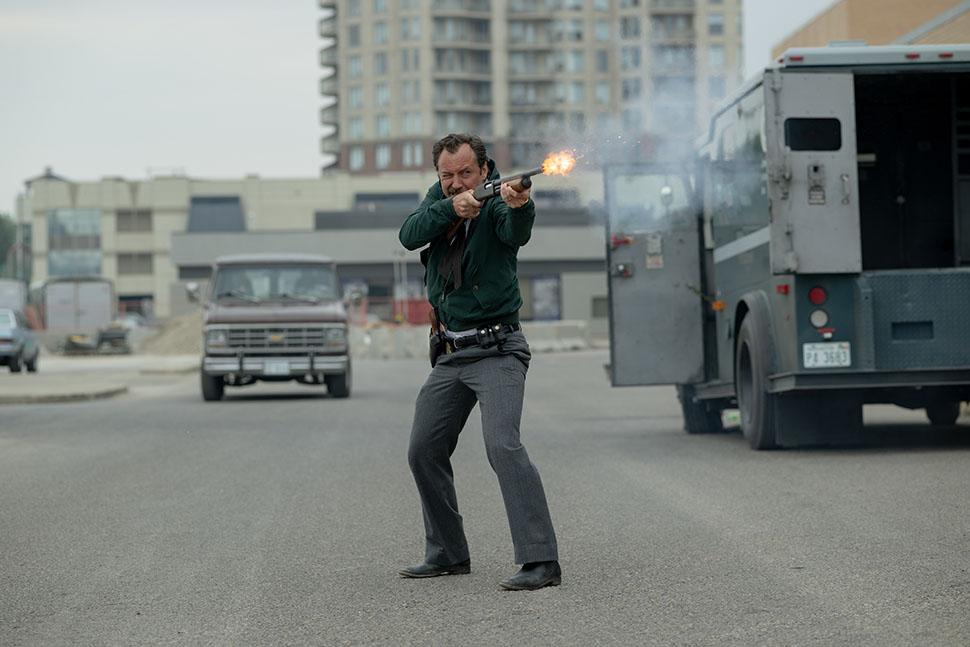After a screening of “Babygirl,” the Nicole Kidman showpiece about dominance and submission in the workplace that shook up the Biennale on Friday, a colleague insisted that, despite its issues, it wasn’t “a dismissible film.” And feeling my oats, I replied, “Just watch me.” But having had some time to turn it over, I’ve decided he’s right. Sort of. The new work from Halina Reijn, the director of “Bodies Bodies Bodies,” is at the very least not to be taken lightly. As a symptom, if nothing else.
Maybe that’s too harsh. I’ve been wrestling with this movie for several days and discussing it with colleagues who admire it a lot more than I do, and while it’s completely out of the question that I’ll ever come to like “Babygirl,” I at least have to respect it for having the courage of its convictions, if I could figure out what the convictions are.
The movie is of course a showcase for Nicole Kidman, here playing Romy, the CEO of an automated tech company who falls into a wildly inappropriate dom-sub relationship with much younger intern Sam, which eventually threatens her marriage to Antonio Banderas, her sanity, and maybe her job. Kidman has garnered kudos for an uninhibited and daring performance, but when has she ever shied away from uninhibited and daring performances? I love to see them always, but I love to see them even more in good movies.
I’m generally not a proponent of the “What is this auteur trying to say?” method of film assessment, but in this case I’m compelled to report that shortly before the film concluded, I was notably confused in that respect. Is “Babygirl” reactionary, holding that women in positions of corporate power have dark secret longings to be under a male thumb? Or is this conclusion less ideological than merely pessimistic? Or what? Etcetera. Without a doubt, however, Romy’s desire/need for domination is here simultaneously overbaked and underthought. I mentioned my confoundedness to a fellow critic who posited another conclusion with a wry smile: “S and M is good?” Okay, maybe, but also, so what?
The movie does flaunt a lack of hesitation in the “is it gonna go there” department, true. But Harris Dickinson’s arrogant, “I’ve got your number” intern Sam is intriguing for about a minute, after which I spent the rest of the picture hoping for his character to be flattened by a truck. Spoiler alert: that truck never shows up.
After being drained by “Maria” and rubbed the wrong way by “Babygirl,” it was with some relief that I enjoyed “The Order,” a fact-based thrilled directed by Justin Kurzel and starring Jude Law as an FBI agent investigating a white-supremacist crime ring in the Pacific Northwest. The Australian Kurzel, known for rather showier fare like “The True History of the Kelly Gang” and “Nitram,” concentrates here on character development and narrative momentum, although one might start getting antsy when he uses deer hunting as a metaphor for something or other. There’s not much in that line, though, and the overall yield is gratifying.
Leading man Law here is notably heavier and older than we’ve seen him. Most eyebrow-raising is the mustache he sports here, which makes him look a little like … Nick Offerman? Yeah, Nick Offerman, I’m afraid. Nicholas Hoult is low-key terrifying as the lead white supremacist. It’s interesting to have a U.S. problem critiqued by an Australian director and two British leads, and indeed, on a queue for the loo after the picture I heard one observer proclaim, “It’s because he’s Australian that Kurzel can really tell the truth about America.”
In any event, the screenwriter Zach Baylin is a native of Delaware and the guys who wrote the non-fiction book on which the movie was based were/are our own guys as well. (The book is The Silent Brotherhood by Kevin Flynn and Gary Gerhardt, both longtime reporters at The Rocky Mountain News; Gerhardt died in 2015.)
Things were looking dire for my fiction-film outlook when, as the weekend approached, I noticed that the best films in that category I’d seen were both made around the time I was born: excellent restorations of Michelangelo Antonioni’s “La Notte” and François Truffaut’s “The Soft Skin.” Great movies, each dealing in its way with amorous discontent and soul-sickness in still-pertinent and moving ways. And both almost eligible for Medicare. Or would be if they were people.
However, I got a welcome jolt of possible greatness with Brady Corbet’s epic “The Brutalist,” a fictional biography of a Hungarian architect’s furious transit in post-World War II America, focusing on his back-and forth with an infuriating patron whose grandiose vision becomes a life work for the two. As architect Laszlo Toth (not to be confused with the actual historical figure who attacked Michelangelo’s “Pieta” in 1972), Adrien Brody is voluble, seemingly inexhaustible; Guy Pearce gives a career high performance as Van Buren, who hires Toth to build something of a mini-city on a hill. Joe Alwyn is a high-proof irritant as Van Buren’s scoffing son.
Corbet shot the film in the all-but-obsolete large-gauge film format VistaVision, and the movie’s many stylistic antecedents include not just Douglas Sirk but King Vidor, whose 1944 “An American Romance” chronicled a European immigrant making his uncompromising name in U.S. steel. This over-three-hour epic is meaty as hell, maybe even a little gristly in sections. But it’s absolutely a movie to be reckoned with, and the most exciting consideration of non-atomic American mutation and madness since Paul Thomas Anderson’s “The Master.”
In North American movies, the disclaimer “based on a true story” often portends waffling and sentimentality and manipulation based on the presumption that you can’t object to anything trite in the content, because come on, it actually happened. The new picture from Brazilian director Walter Salles, waits until the end to inform the viewer that it’s based on a true story. One may well suspect that while watching, but the confirmation is moving and disturbing more than anything else.
“I’m Still Here” (the title as translated from the Portuguese original, “Ainda Estou Aqui”) is mostly set in the early 1970s, when Brazil was ruled by a military dictatorship. Salles spends a good 45 minutes allowing us to get to know the Paiva family. Sweet-natured architect Rubens and his wife Eunice have five lovely children, a home mere steps from a Rio beach, and a rich life filled with music and good food. And one day some severe looking men come to the Paiva house and take Rubens away to ask him some questions. And he doesn’t come back.
The remainder of the movie shows us Eunice’s efforts to find out what happened to him. She spends a fair amount of time in jail herself and has to sacrifice to keep her family safe and fed. Fernanda Torres, as Eunice in middle age, gives a subtle and nuanced performance that arguably mops up the floor with more than one of the lead turns I’ve seen celebrated at the Biennale so far. And in a rather astonishing development, Fernanda Montenegro, who played the beleaguered older woman in Salles’ 1998 debut feature “Central Station,” makes a brief but crucial appearance here, still a gripping screen presence at age 95. Which is how old I’m going to start feeling if I don’t get some sleep out here.



:format(jpeg):quality(80)/wp-content/uploads/2024/09/denis-alibec-scaled-e1726348735324.jpg)


:format(jpeg):quality(80)/wp-content/uploads/2024/09/sibiu.jpg)



:format(jpeg):quality(80)/wp-content/uploads/2024/09/orasul-strain-limba-romana.jpg)
:format(jpeg):quality(80)/wp-content/uploads/2024/09/mesajul-astrelor-10-septembrie.jpg)


:format(jpeg):quality(80)/wp-content/uploads/2024/09/fabrica-romania.jpg)







:format(jpeg):quality(80)/wp-content/uploads/2024/08/oras-fantoma.jpg)






